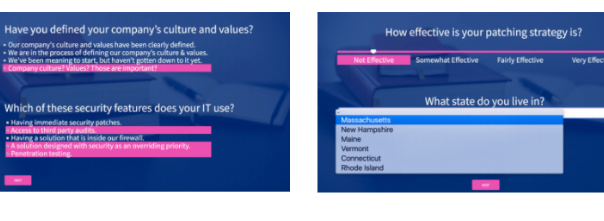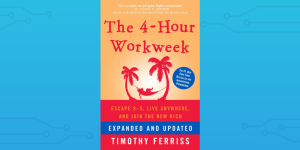— July 1, 2017
The days of boring lead-capture forms and irritating questions from sales reps are over.
An interactive content assessment – also known as an assessment, persona assessment, personality assessment or maturity assessment – is an easy way to automate your lead scoring while engaging prospects in an active and informative experience.
With interactive content technology, lead scoring can be as fun as taking a personality quiz. Done well, assessments create the opportunity for a two-way conversation. Prospects share qualifying information and rich data with you, and you provide personalized follow-up that helps them solve the problems they tell you they’re struggling with.
According to a report from Demand Gen Report, 86% of marketers are currently using lead scoring as part of their demand generation strategy. The remaining 11% plan to implement a lead scoring system in the next year.
Lead scoring is so effective at helping businesses get ahead that marketers are spending their valuable time on it. However, most lead scoring systems can stand to be improved. That same report found that only 20% of marketers think their current systems are highly effective.
For marketers, assessments help them spot super MQLs – those highly qualified leads who are ready to be sent to the sales team.
For customers, these assessments are actually valuable resources that help them decide – for themselves – whether or not your solution is right for them.
Here’s an example. In this assessment from Euler Hermes, users learn about the company while also determining if strategic credit management is the right choice for them. As the user answers each question, they’re scoring themselves.
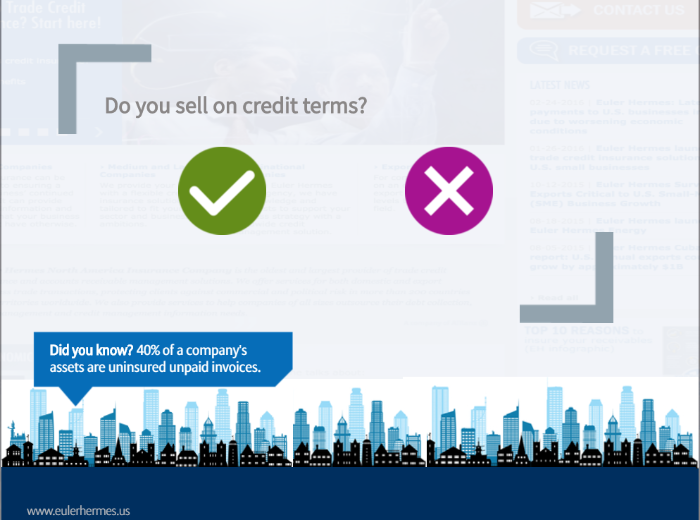
Ultimately, an assessment is a two-way discovery tool. Marketers learn about prospective buyers, and customers learn about themselves and the company’s solutions.
Not every assessment works the same, however. If you’re thinking of creating a assessment for your own organization, or you have one that you’d like to improve, read on.
Two Ways to Build the Ideal Assessment
There are two proven types of assessment that work. These two assessments give you the information you need about prospective customers, and they give users a great experience that sets them on the path to purchase.
The first is a Personality Assessment, where each answer ties directly to one of the result categories. Think of a Cosmo quiz or Buzzfeed quiz, here. Use this type of quiz when you need to give more generalized results to the user.
Here’s an example from Unitrends:
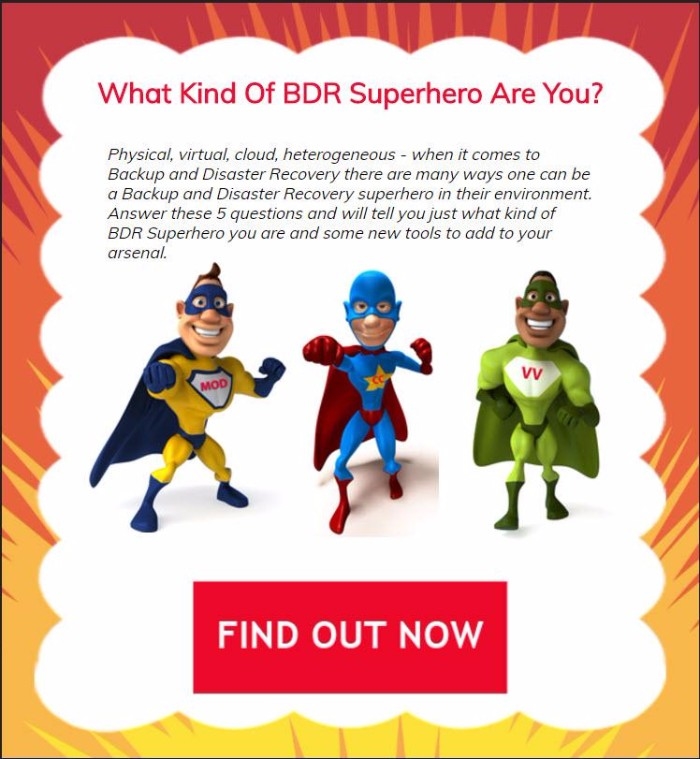
The second kind of assessment that works well is the Range Assessment. Think of a Myers-Briggs personality test, here. Each answer has a point value, and those points add up to a score that determines the user’s result. Use this when you need a more distinct score.
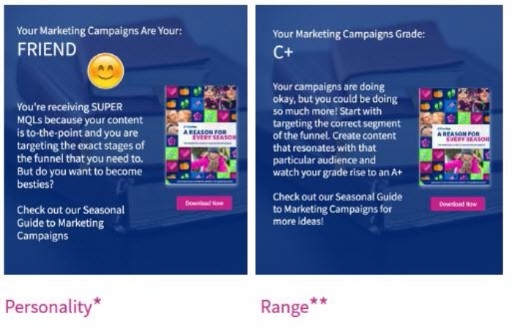
21 Ways to Improve the Results of Your assessments
Now that you know the two best ways to create an assessment, it’s time to get down and dirty. Here are 21 ways to make sure your assessment works optimally for your business goals and assessment users – so you can convert those qualified leads into happy customers.
1. Decide what information you need BEFORE you create the assessment
What specific information do you need from users to qualify them as leads? Decide what information is most valuable to you for lead scoring before you create your assessment.
2. Talk to your sales team
Set aside time to talk to the people who interact most directly with customers: your sales team. Find out what information they need to make the sale, and what questions they most often get asked.
You’ll make the sales reps’ jobs easier by sending them super MQLs (which also increase sales results, which lead to higher ROI for your marketing team – win/win!), and your job will be easier because your assessment will do the scoring for you.
3. Leverage your buyer personas
Dig into your buyer personas to uncover more effective lead scoring criteria. What makes a persona highly qualified? Ask assessment questions around those traits.
4. Create different assessments for different sections of the sales funnel
Each section of the sales funnel is unique. Your assessments should be, too.
First, decide on the goal based on where the customer is coming from. Do you want to create awareness? Improve engagement? Convert visitors?
At the top of the funnel, where your goal should be around creating awareness, an assessment with three to five questions and broad results would work well.
In the center of the funnel, where engagement is key, focus on educating users. Provide them with more specific, individualized results and next steps. Keep the number of questions low, still, though. We recommend no more than eight questions, because more than that can cause customers’ interest to wane.
At the bottom of the funnel, focus your assessment around conversion. Gather more information from users, and offer them fully detailed and very specific results. You can use more questions, here, but try not to include more than 10.
5. Take advantage of the power of interactive content
The big difference between an old-fashioned lead-capture form and today’s assessments is interaction. Sure, in both cases, the lead is giving you information about who they are and what they need – but the interactive elements of assessments make that a two-way conversation. Take advantage!
Include interactive elements that make the assessment more fun for and more valuable to the user. Use interactive elements to educate them, help them assess their situation and overcome their obstacles.
In this example from ServiceNow, the interactive elements not only help the user to learn about their IT needs, but the animations make the experience more alive.
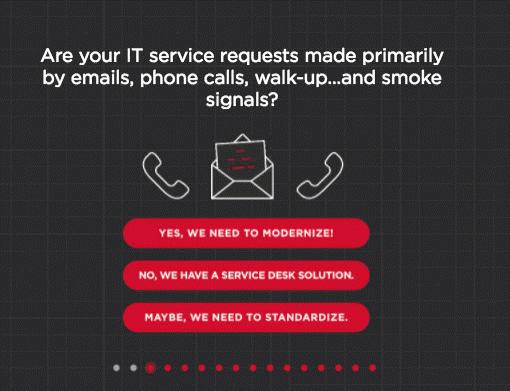
Still not convinced? This study by Demand Metric found that interactive assessments convert 2x better than static content.
“Interactive content, such as apps, assessments, calculators, configurators and quizzes, generates conversions moderately or very well 70% of the time, compared to just 36% for passive content.” – Demand Metric
6. Reach out to current customers
Look through your customer feedback and keep an eye out for patterns. What made them choose your solution? You might be able to identify common pain points that your leads need to see as their taking the assessment. Let them know you understand their pain points, and they’re more likely to believe you can solve them.
7. Keep the assessment brief
No one has the time or patience to complete a mile-long assessment these days. Keep your assessments brief to keep engagement high and keep the momentum up. Determine each user’s assessment result in as few questions as possible.
8. Make it FUN
Your target customers might not feel excited about filling out a form – but ask them to take a Marketing Superhero personality test, and they’re on board.

Image source: kissmetrics.com
9. State the benefit up-front and make an offer at the end
No matter how fun a assessment looks, not everyone will want to take it if the value isn’t apparent from the get-go. In this example from our very own SnapApp team, the value proposition is on the first page:
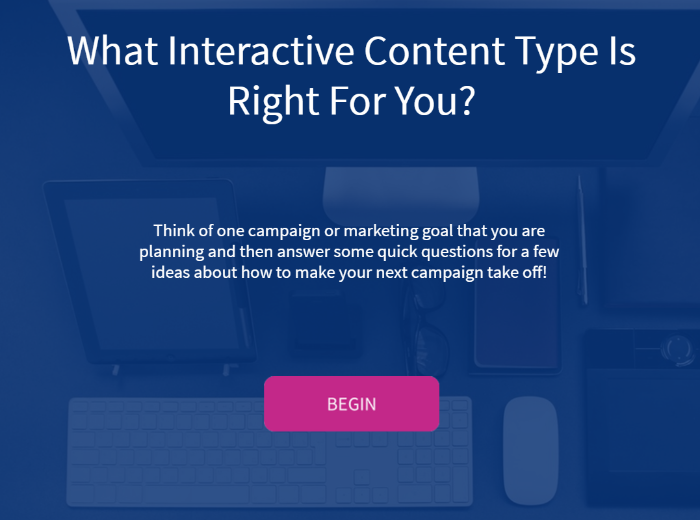
At SnapApp, we’ve also found that assessment creators who include an offer at the end of the questions experience higher completion rates.
10. Make sure every results page has instant value
Your results pages are where the rubber hits the road. Make them VALUABLE. For example, don’t just tell the user which personality type they are, but explain what the personality type is, why it matters, and how their answers determined that result.
11. Give the user just enough information
Conversely, don’t give the user too much information on the result page, either. Give them enough information to understand why they got their result and what the next steps are – but don’t overwhelm them. Use follow-up emails to provide more details if you need to.
12. Have a plan for each result
Put your MAP (marketing automation provider) in the mix and create a plan for each result. For example, if a user gets Result A, they get sent to sales as a super MQL – but if they get Result B, they get added to an automated email sequence designed to warm them up before sending them to sales.
13. Use different question types
Once you know what the assessment results will be, and you have your plan for each result, it’s time to develop your questions and answers. The questions are your first opportunity to have a dialogue with the user, so they should be engaging and representative of your expertise.
To avoid putting the user to sleep, use different types of questions to create a livelier experience.

- Single Select Questions: The user gives a specific answer, typically by selecting a radio button.
- Multi Select Questions: The user can provide more than one answer, typically by clicking checkboxes.
- Slider Bars: Great for ratings questions.
- Dropdown Lists: Best for when there is a long list of answers.
- Open-ended questions: The user can type in their own answer.
14. Caveat: Not every question has to tie to results!
For the sake of engagement, feel free to include questions simply for fun or for your own information gathering.
15. Make the questions and answers clear and concise
Leave out the jargon and complex language. Write your questions in an understandable way, and keep them short. Make the experience fast and easy.
16. Maintain a conversational tone
Remember, a assessment is a conversation – so maintain a conversational tone. Give your answers personality (that matches your brand, of course), like replacing “Yes” with “Yes we do!”
Don’t worry about making the answers match the relevant sections in your MAP. You can use Alternate Lead Values to make sure the information gets sent over correctly.
17. Make the logic simple
Avoid super complex combinations of answers, or answers that lead to hyper-specific results. Keep things simple for a better user experience and ease-of-use on the marketing end.
18. Make sure your marketing automation is linked up and ready to go
Test your questions and answers to make sure they’re getting sent to your marketing automation software properly, and the user is added to the right sequences. One glitch can take a qualified lead out of the sales cycle – or put an unqualified lead in the hands of an already overburdened sales team.
19. Point the user to the next step – clearly
Use the results pages to tell the user what the best next step is for them. You can include a link to a relevant webpage, a downloadable content asset, or even just some clear-cut advice based on their result.
20. Keep the themes of your assessment and follow-up aligned
Make sure your follow-up emails match the theme of your assessment to ensure a consistent experience for the user. It can be jarring for a user to go from a lighthearted superhero personality quiz to a follow-up email that’s written in heavy tech-speak.
21. Deliver personalized follow-up
Make sure your marketing automation software is set up to deliver personalized follow-up emails based on the user’s result. Best practices here include repeating the information from the result page so the user gets a “receipt of the information,” and including a note about sharing the assessment with their peers or colleagues.
HubSpot is a good example of a company with a great personalized follow-up system. After a user takes this Website Grader assessment, the company sends personalized marketing messages based on the result – and from there they nurture the lead until they’re ready to buy.
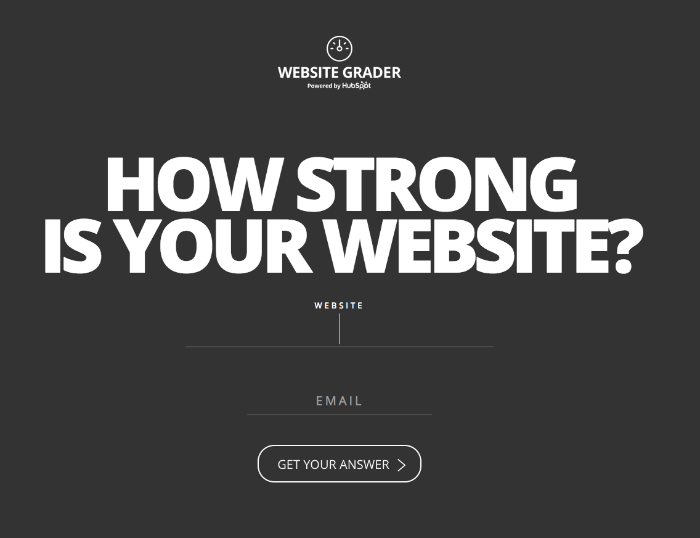
Image Source: website.grader.com
Business & Finance Articles on Business 2 Community
(82)
Report Post